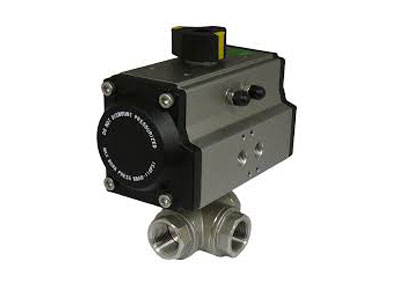Key Takeaway
Opening a solenoid valve can be done manually or electrically. For manual operation, locate the manual override feature, often a small lever or knob on the valve. Turn it to open the valve. For electrical opening, ensure the valve is properly wired and energized.
The solenoid coil will pull the plunger, allowing fluid to flow. Think of a solenoid valve like a gate. Manually, you can open it with a lever, bypassing the solenoid. Electrically, the coil does the work for you when powered. Always ensure the power supply is correct before attempting to open it electrically. This way, the valve functions smoothly and efficiently.
Safety Precautions Before Handling Solenoid Valves
Before working with solenoid valves, it is crucial to take appropriate safety measures. Always disconnect the power supply to avoid electrical hazards and ensure that the system is completely depressurized to prevent fluid or gas release.
Wearing suitable personal protective equipment (PPE), such as gloves and safety glasses, is essential for protection against chemical exposure or mechanical injuries. Inspect the area for potential risks, including leakage or high-temperature fluids, and use proper tools for maintenance tasks. Following the manufacturer’s guidelines and conducting regular inspections can help maintain operational safety and system efficiency, minimizing the risk of accidents.

Identifying the Type of Solenoid Valve Mechanism
Solenoid valves come in different types, each with specific mechanisms suited for various applications. The most common are two-way and three-way solenoid valves. Two-way valves are simple, with two ports that allow fluid to flow through when activated, while three-way valves can divert flow from one port to another. Understanding which type of valve mechanism is needed for a system depends largely on the process’s requirements, such as whether the valve needs to redirect flow, mix two fluids, or provide a shut-off function.
The operation of each valve type also varies in complexity. Two-way valves are often used in straightforward on/off applications, such as controlling water flow in irrigation systems. In contrast, three-way valves are typically used in more complex systems where the flow needs to be diverted or mixed, such as in HVAC systems or industrial automation. Recognizing these differences is crucial for engineers who must ensure that the right valve mechanism is selected for a particular fluid control need.
For example, if you are working with a heating system where water flow needs to be directed to different circuits based on temperature readings, a three-way valve will be ideal. Engineers must also consider the material compatibility and pressure ratings of the valves to ensure long-lasting, efficient performance in their respective applications.
You May Like to Read
Step-by-Step Guide to Manually Opening Solenoid Valves
Opening a solenoid valve might sound technical, but with the right steps, it becomes manageable. Here’s how to do it:
1. Power Off the System: Ensure the system’s power supply is turned off. Verify with a multimeter to confirm no residual current.
2. Depressurize the Line: Open any bypass valve to release pressure. Check that no fluid or gas remains in the line.
3. Locate the Manual Override: Most solenoid valves have a manual override screw or knob. Refer to the valve’s instruction manual to find it.
4. Engage the Manual Override: Use a suitable tool to turn or press the override mechanism. This action will manually open the valve.
5. Test the Valve Movement: Slowly open the upstream flow to check if the valve is functioning as expected. Observe for any leaks or unusual sounds.
6. Re-energize for Testing: Once you’ve completed the manual operation, restore power to confirm the valve’s normal functioning.
Tools Required for Opening Solenoid Valves
Having the right tools can make or break the job of opening a solenoid valve. Here’s what you’ll typically need:
1. Insulated Screwdrivers: Essential for adjusting the manual override or loosening screws. Ensure they are insulated to prevent electrical shocks.
2. Multimeter: Use this to verify the absence of voltage before working on the valve.
3. Adjustable Wrenches: For loosening connections or fittings without damaging them.
4. Safety Gloves: Protect your hands from chemical spills, heat, or sharp edges.
5. Pressure Gauge: This helps in monitoring the pressure levels before and after valve operation.
6. Flashlight: Handy for inspecting hard-to-see areas, especially in poorly lit setups.
Common Challenges When Opening Solenoid Valves
Even with preparation, opening a solenoid valve can come with its own set of challenges. Here are the most common ones and how to address them:
1. Stuck Valve: Over time, debris or corrosion can cause the valve to stick. Use a cleaning agent to remove buildup, or gently tap the valve to free it.
2. Faulty Manual Override: Sometimes, the manual override mechanism is damaged or non-functional. In such cases, consult with maintenance personnel or replace the faulty component.
3. Electrical Issues: Residual current or wiring problems can hinder manual operation. Use a multimeter to identify and resolve electrical faults before proceeding.
4. Incorrect Identification of Valve Type: Working on the wrong type of valve can lead to system malfunctions. Always verify the valve’s specifications and mechanism before starting.
5. Pressure Build-Up: Even after depressurization, some systems retain trapped pressure. Slowly open fittings to release any remaining pressure before proceeding.
Understanding these challenges and knowing how to address them ensures smoother operations and minimizes downtime in industrial processes.
Conclusion
Opening a solenoid valve is not just about turning a knob or screw; it’s about understanding the mechanism, following safety precautions, and addressing challenges effectively.
New engineers in the industry should take every opportunity to learn from experienced professionals and practice these steps regularly. Proper handling techniques not only enhance your technical skills but also contribute to maintaining the integrity of the industrial system. With the right knowledge and tools, solenoid valve operations become an integral part of efficient and safe workflows.
